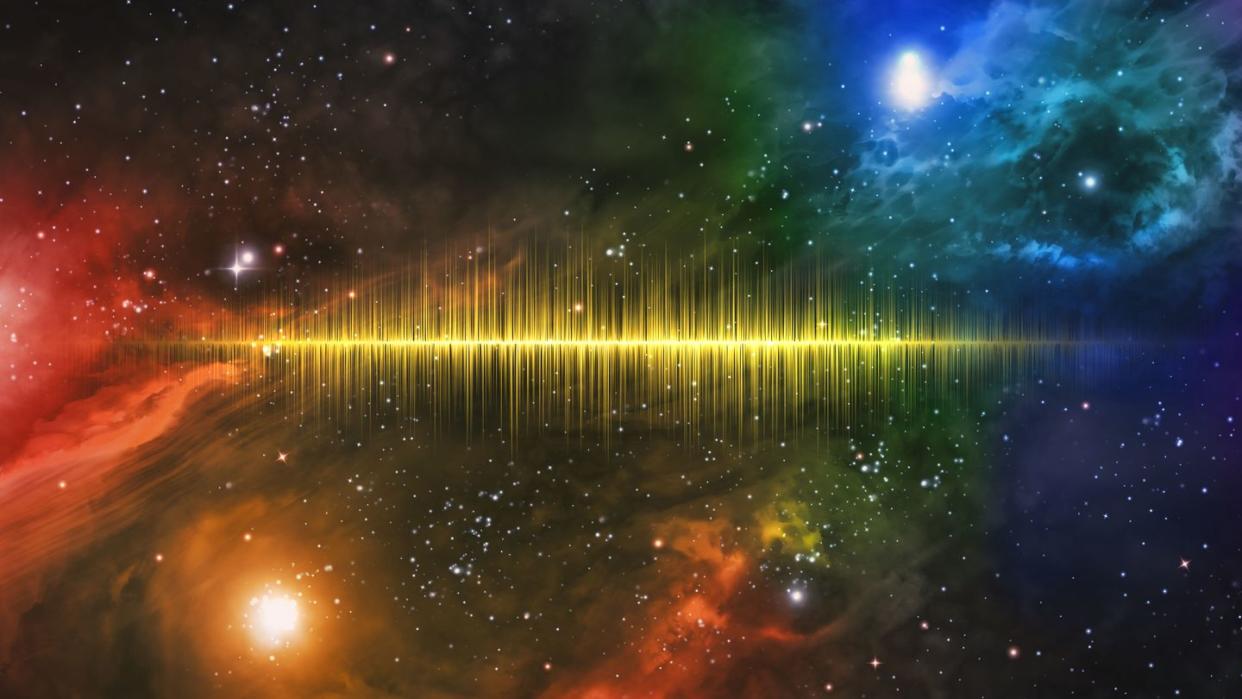A Mysterious Object Is Emitting Microwaves in Deep Space. It's Unlike Anything Ever Known.

"Hearst Magazines and Yahoo may earn commission or revenue on some items through these links."
The Atacama Large Millimeter/submillimeter Array (ALMA) interferometer detected a strange object that appears to only be emitting microwaves near the Milky Way’s center.
Now, a new study compares this object to known celestial objects in this chaotic region of deep space. After doing so, the scientists behind the study discovered that none of the known objects’ descriptions fit this new object perfectly.
While the authors guess the object could be the remnants of stellar merger or an intermediate-mass black hole (IMBH), future studies in millimeter and mid-infrared bands will need to be conducted in order to definitively identify this currently unknown phenomenon.
Space is a big place.
But despite our diminutive size among the hundreds of billions of stars in the Milky Way (which is itself among hundreds of billions of galaxies), scientists have slowly pieced together a long list of all the strange stuff we might encounter throughout the cosmos. However, sometimes humanity’s collection of orbital space telescopes, ground-based arrays, and interplanetary spacecraft come across something that’s a bit of a head-scratcher.
Meet the latest one—the millimeter ultra-broad-line object, or the MUBLO for short.
Identified in a new paper published last week in the Astrophysical Journal Letters, the object in question lies near the center of the Milky Way Galaxy, which the researchers describe as containing “tens of millions of solar masses of gas, a supermassive black hole, a tenth of our Galaxy’s ongoing star formation, and an extensive graveyard of stellar remnants.”
Although it’s a cosmic mess, it’s among this interstellar chaos where new celestial objects will be discovered, and the Atacama Large Millimeter/submillimeter Array (ALMA) interferometer is one of the most powerful tools in humanity’s star-gazing arsenal. Composed of 66 radio telescopes, this array (as its name suggests) can analyze electromagnetic radiation emanating from space at millimeter and submillimeter wavelengths.
While gazing at our galaxy’s center, researchers stumbled upon a compact source subsequently labeled “G0.02467–0.0727,” otherwise known as the MUBLO. Made of cold dust and fast-moving gas, the MUBLO also exhibited another strange behavior—it only emitted microwave radiation. Adam Ginsburg, the lead author on the paper, and his team went through the long list of celestial explanations and came up short.
“We consider several explanations for the [MUBLO], including protostellar outflow, explosive outflow, a collapsing cloud, an evolved star, a stellar merger, a high-velocity compact cloud, an intermediate-mass black hole, and a background galaxy,” the paper reads. “Most of these conceptual models are either inconsistent with the data or do not fully explain them. The MUBLO is, at present, an observationally unique object.”
According to Nature, the gas molecules are also not traveling in a simple ring, which could point to having been blown away by a stellar explosion. But the MUBLO lacks certain chemicals that would be tell-tale signs of such an event.
Among the various celestial phenomena examined in the paper, the authors point out two that could explain the MUBLO—a stellar merger or an intermediate-mass black hole (IMHO). However, neither of these hypotheses are perfect. While the stellar merger idea is compelling, the MUBLO has “dust mass is substantially larger, by more than an order of magnitude, than observed toward any other merger remnant.” As for the IMHO suggestion, it “does not explain all of the observed features of the MUBLO.”
To understand this new phenomenon—or, perhaps, a well-disguised known object— uture millimeters and mid-infrared studies will need to analyze the MUBLO and discern previously unseens features that, hopefully, will point toward what it is.
For now, add another galactic mystery to the list.
You Might Also Like




